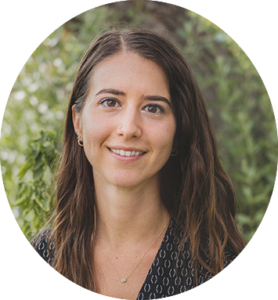Experience the calming and healing benefits of...
Craniosacral Therapy
Craniosacral therapy (CST) is a gentle, hands on technique aiding in relaxation of the nervous system developed by John Upledger, DO. At Aspen Integrative Medical Center in Flagstaff, AZ, Alexandra Mele, ND specializes in craniosacral therapy using it to relieve dysfunction in the body at the level of the nervous system by working with the bones of the skull, sacrum and spinal column. Gentle touch is applied, about the weight of a nickel, to release soft tissues associated with the central nervous system. The whole body is an interconnected web of fascia, connective tissue, nerves, muscle and bone. Fascia is more like a 3D organ rather than just a connective tissue alone and can deeply contribute to pain and emotional patterns. Craniosacral therapy works with this connectedness through subtle release and attention to where tension is being held in the body. For example, we may get terrible pain at the base of our neck. There can be many structures involved in this pain, perhaps the muscles that attach there, perhaps a nerve is compressed or maybe we fell on our sacrum and this is creating tension in our neck. This occurs because connective tissue is continuous from our skull to our sacrum, creating a fulcrum for this tension in our neck even though the impact was on our sacrum.
What are the benefits of craniosacral therapy?
Benefits of craniosacral therapy include:
-
- Relaxation of the central nervous system making it a great adjunctive treatment for anxiety, stress, insomnia and depression.
- Releases longstanding tension patterns in the body from stress, trauma, injury or dysfunction
- Retrains the nervous system to more easily enter into a relaxing state and help to release mental and emotional blockages due to past trauma both mental and physical.
- Improves sleep
People of all ages can benefit from CST from infants to the elderly.
What conditions is craniosacral therapy used to treat?
Craniosacral therapy is used to treat many conditions, but the most common conditions backed by clinical research and experience include:
-
- TMJ (temporomandibular joint) disorder or dysfunction
- Sinusitis
- Chronic allergies
- Chronic ear pain or infection
- Eustachian tube dysfunction
- Recovery from tongue tie release
- Constipation
- MVA (motor vehicle accident), whiplash injury
- Post-concussive syndrome
- TBI (traumatic brain injury)
- Chronic migraines or headaches
- Chronic nausea
- Musculoskeletal pain
- Fibromyalgia
- Torticollis
- Joint pain
- Lower back pain
- Sacrum injury
- Sciatica
- GI concerns
- Insomnia
What should I expect during my first craniosacral therapy session?
History will be taken to understand your condition along with a general assessment of the areas of tension in the body. The areas of tension may not be related to your main concern, but please remember the whole body is connected! Working on a different area may facilitate release and relief in the area of main concern. Treatment lasts 45 min to 1 hour and can be accompanied by relaxing music. The patient is lying on their back on a treatment table for the duration of the therapy. Gentle touch will occur to the bones of the skull, back, abdomen, rib cage, sternum, neck, and sacrum.
Why should I choose Dr. Mele over other craniosacral specialists?
Her craniosacral therapy skills are complemented beautifully with equal training and experience with visceral manipulation which provides an even greater level of understanding of the body through the organs and their connective tissues.
So if you are considering craniosacral therapy and/or visceral manipulation for your health concerns, we strongly suggest seeing Dr. Mele for evaluation and treatment. And if you’ve seen another provider who does these modalities and you have had mixed results, do not give up on the modality as not all providers practice and evaluate in the same way.
Is there any pain or discomfort with treatment?
None. There should never be any pain or discomfort during treatment. If there is, the patient will let the practitioner know and this will be aided. Accommodations can be made for patient comfort including bolsters for knees or lower back if there are pre-existing conditions.
What can I expect after a craniosacral therapy treatment?
Patients can expect to feel relaxed, lighter and most have decreased pain. Sometimes patients feel they need to drink more water or not do strenuous activities directly after treatment. Emotional release can occur as we work on the physical body, so patients may feel they are able to process past events or feel the need to cry or release emotions in whatever way feels best to them.
How many treatments will I need?
Treatments are typically every 2-4 weeks depending on the severity and chronicity of the issue. Treatments can be used to maintain relief and occur once monthly as adjunctive therapy, just like massage or chiropractic care. Some conditions may only need several treatments to see benefit.
How will I know if treatment is working for me?
Patients should expect relief of pain after 1 to several sessions, a change in their pain pattern or condition or the ability to be treated less often with the same beneficial results.
Can craniosacral therapy and visceral manipulation be done in the same session?
Yes! Both modalities complement each other well. Typically visceral restrictions are worked on first, followed by craniosacral therapy.
References
Upledger Institute International, https://www.upledger.com/therapies/faq.php?_gl=1*gspcie*_ga*ODcyNTg1NDMuMTY4MzQ3ODg4Mg..*_ga_2NPCRHNTWG*MTY4MzQ3ODg4Mi4xLjEuMTY4MzQ3ODk0NS4wLjAuMA..



